CII MediBuddy Report Maps Corporate India’s Digital Health Readiness
Wellness is No Longer a Cost, Its Capital: CII–MediBuddy Report Maps Corporate India’s Digital Health Readiness
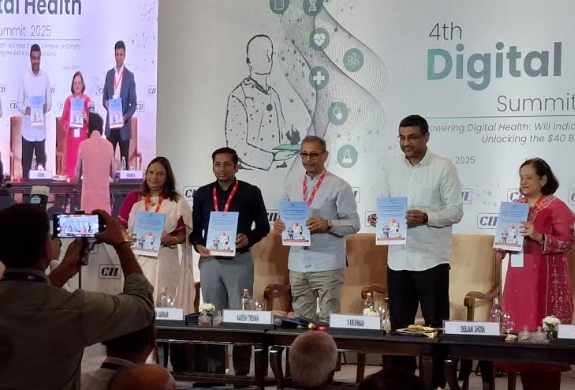
25 July 2025 – MediBuddy, India’s largest digital healthcare company, in collaboration with CII, today unveiled the second edition of its corporate wellness report, marking a continued effort to decode the evolving landscape of employee well-being in India Inc. The latest edition, titled Workplace Health Reimagined: Corporate India’s Readiness for Digital Health Leadership, highlights how employee wellness is evolving from a peripheral initiative to a strategic lever for workforce productivity, talent retention, and business continuity.
India’s healthcare and workplace wellness landscape is undergoing a significant transformation, with wellness emerging as a national priority in the journey towards Viksit Bharat 2047. This is being shaped by rising medical inflation (14%), increased chronic disease risk, a digitally empowered workforce, and growing demand for inclusive and preventive care models. In a post-pandemic world, where hybrid work models have become the norm, organisations are rethinking wellness, placing equal weight on physical and mental health, and moving from episodic to always-on care models. Technology is at the heart of this transformation; AI-driven insights, data-enabled personalisation, and mobile-first platforms are enabling more impactful care delivery. The nation’s digital health infrastructure demonstrates remarkable scale. Public health initiatives such as the Ayushman Bharat Digital Mission (ABDM) and the IRDAI’s push for 100% cashless insurance claims are further accelerating the shift toward digitally integrated, OPD-first healthcare systems. Together, digital infrastructure and insurance are proving to be critical enablers of equitable, future-ready wellness delivery across India.
The report reveals a stark reality of over 70% of employees carrying at least one lifestyle-related health risk, yet only 20% of employers providing routine health screenings. This alarming scenario calls for a shift from episodic, event-based health programs to always-on, digital-first ecosystems that drive workforce productivity, talent retention, and business continuity, all fostering business growth in today’s evolving times of shifting workforce priorities.
Key findings/highlights from the report:
Macro View: The National Wellness Landscape
- Rising Burden of NCDs: Non-communicable diseases now account for 63% of all deaths in India, with heart disease, diabetes, and stroke impacting the workforce at median ages of 32, 34, and 36, respectively.
- Healthcare Infrastructure Crisis: The doctor-to-population ratio remains below WHO guidelines, with 70% of Indians in rural/semi-urban areas facing significant access barriers to diagnostics and routine care
- Healthcare Coverage Crisis: Only 41% of Indian households have any form of health insurance, leaving over 50 crore people, belonging largely from India’s 40-crore “missing middle” population, particularly comprising gig, daily wage, and informal workers, vulnerable to catastrophic health expenses
- Low OPD Insurance Penetration: OPD insurance penetration in India remains below 0.1%, a significant gap compared to over 85% in the US and 95% in Singapore, leaving most outpatient expenses uncovered, despite OPD accounting for nearly 70% of out-of-pocket healthcare spending
- High Out-of-Pocket Spending: OOPE accounts for 63% of India’s total health spend
- Within Workplaces: The Corporate Lens
- Productivity Loss: Presenteeism and chronic illnesses cost Indian companies up to ₹1.12 lakh per employee annually, while structured wellness programs deliver a 3–4x return on investment
- Limited Access to Diagnostics: Less than 20% of corporate health programs cover essential diagnostics, despite their role in 60–70% of clinical decisions
- Low Preventive Screening for Women: Only 1.9% of eligible Indian women undergo cervical cancer screening, and just 36% of corporates provide targeted wellness benefits for women
- Gaps in Women-Centric Benefits: Just 36% of corporates offer targeted wellness benefits for women, with even fewer extending support for eldercare and mental health
- Lifestyle Risks and Screening Gaps: Over 70% of employees have at least one lifestyle-related risk factor, yet only 20% of employers provide routine health screenings
- SMEs Lag in Wellness Coverage: Although SMEs employ over 111 million people, only 9% offer structured wellness programs
- Corporate Wellness Readiness: India’s average Corporate Wellness Quotient (CWQ) score stands at 55/100, with fewer than 15% of companies achieving a ‘Mature’ wellness readiness level
Satish Kannan, Co-founder & CEO, MediBuddy, said, “India’s journey towards becoming a Viksit Bharat by 2047 cannot rest on economic metrics alone; it must be built on the health, productivity, and well-being of its people. As we stand at this inflection point, employee wellness can no longer be treated as an optional benefit but must be considered a strategic imperative. With rising health risks and evolving workforce expectations, this report in collaboration with CII offers actionable insights and data-driven frameworks to help organisations transition from annual health camps to always-on, digital-first ecosystems. At MediBuddy, we are happy to support this transformation by delivering care that is proactive, personalised, and powered by technology.”
Insights from the report: Trends reshaping care culture
The report highlights how employee wellness in India is moving beyond one-size-fits-all health programs to more integrated, inclusive, personalised, and digitally powered wellness solutions. Employees now expect benefits that reflect their life, role, and risk profile across domains such as mental health, chronic care, eldercare, and preventive screenings. At the same time, employee engagement is being increasingly driven by features such as gamified health journeys and wellness wallets. Additionally, mobile-first platforms and OPD access for dependents are now becoming differentiators in how employees engage with corporate wellness programs, with inclusion-focused benefits becoming key in addressing diverse workforce needs.
To direct this shift, the report introduces the Corporate Wellness Quotient (CWQ), an original and comprehensive benchmarking tool measuring digital wellness maturity and readiness across four pillars: access & affordability, policy integration, digital enablement, and employee engagement; and the ten-step wellness blueprint, which offers companies a strategic roadmap to build resilient and inclusive care ecosystems.
Dr. Shuchin Bajaj Wins ‘Healthcare Leader of the Year’ Award
Dr. Shuchin Bajaj, Founder & Director of Ujala Cygnus Healthcare Services, Honored as ‘Healthcare Leader of the Year’ at India Health Next Awards 2025
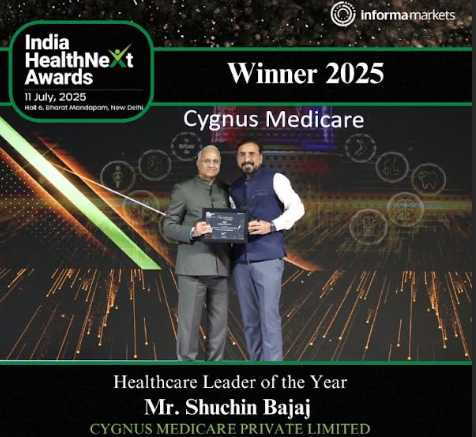
New Delhi, July 24, 2025: Ujala Cygnus Healthcare Services proudly announces that its Founder and Director Dr. Shuchin Bajaj has been honoured with the ‘Healthcare Leader of the Year’ award at the India Health Next Awards 2025. The award ceremony held at Bharat Mandapam, Delhi recognized Dr. Bajaj’s exceptional leadership, visionary contribution, and impactful initiatives in advancing equitable and accessible healthcare across underserved regions in India.
The India Health Next Awards actively recognize transformative efforts in India’s healthcare sector and are regarded as one of the most respected platforms in the field. Dr. Bajaj was chosen for his consistent work in narrowing the healthcare gap between rural and urban India through scalable, ethical, and quality-driven healthcare delivery. Under his leadership, Ujala Cygnus has grown from an initial network of just 9 hospitals to 28 NABH-accredited multi-specialty facilities across Uttar Pradesh, Punjab, Haryana, Uttarakhand, and Jammu & Kashmir. Today, the network provides more than 2,800 hospital beds and is supported by over 500 experienced clinicians.
Reflecting on the honor, Dr. Bajaj remarked, “I am truly honored to receive the ‘Healthcare Leader of the Year’ award. Receiving this prestigious award is extremely humbling yet very motivating, and confirms that we are on the right track towards bringing quality, ethical, and accessible healthcare to those who need it the most. I would like to share this award with every member of the Ujala Cygnus family – our doctors, nurses, frontline teams, and partners – who empower us to live this vision through their dedication and hard work.”
Dr. Bajaj has pioneered regionally responsive health systems that serve marginalized and resource-constrained regions effectively. A Harvard alumnus and respected voice in public health policy, he has driven innovation in public-private partnerships, preventive care, and socially inclusive health care models. He is also an entrepreneur, and his focus has been on building sustainable, scalable solutions for healthcare across India.
This recognition not only celebrates Dr. Bajaj’s individual achievements but also underscores the urgent need for scalable healthcare models in India’s tier 2 and tier 3 regions. As Ujala Cygnus continues to expand its footprint, the award serves as a timely reminder of how compassionate leadership, backed by innovation and community-driven goals, can meaningfully bridge healthcare inequalities and transform millions of lives.
SMSIMSR Hosts ‘Save the Young Heart’ Conference on Early Heart Attack Prevention
Save the Young Heart Conference – SMSIMSR’s Awareness Endeavour for Early Detection and Prevention of Heart Attacks in Young Adults
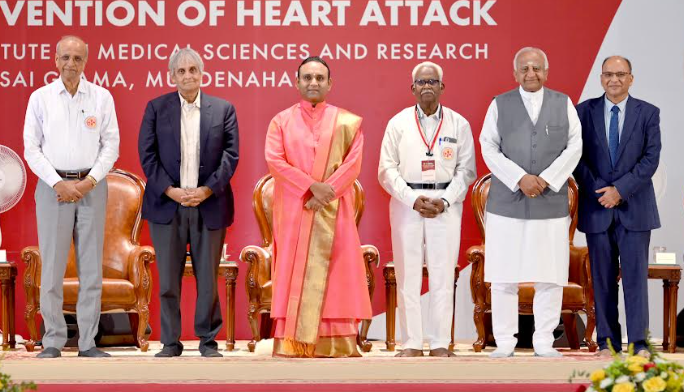
Sathya Sai Grama, Muddenahalli , 21 July 2025 – The devastating crisis unfolding in Karnataka where youth in their 20s – 40s are succumbing to sudden episodes of cardiac attacks reinstates that “preventive and curative healthcare is the way to go”.
Healthcare and Cardiac care veterans cite awareness about such occurrences, watching out for the tell-tale signs of impending cardiac attacks and taking preventive and precautionary measures are key to containing this crisis.
As a strategic endeavour to foster awareness on early detection and prevention of heart attacks in young adults, Sri Madhusudan Sai Institute of Medical Sciences and Research (SMSIMSR) organised the Save the Young Heart Conference on 18 – 19 July 2025 that brought together Cardiac care veterans, young healthcare professionals, wellness coaches, educators, tech giants, innovators and corporates and HR heads promoting workplace health.
The key themes of the conference are prevention of heart attack in young adults, role of diet and lifestyle in cardiac health, and practical tools for managing stress and emotions. The conference also emphasised on emergency CPR training, the significance of heart health screenings and insights into free cardiac care initiatives.
The inaugural session was presided by Dr Balakrishnan, eminent cardiothoracic and transplant surgeon; Sri B N Narasimha Murthy, Chief Mentor at the Sri Sathya Sai Loka Seva Gurukulam Group of Institutions; Dr Annarao Kulkarni, President of the IAPSM Karnataka State Chapter; Dr Raghupathi A R, Director – Liaison & Strategic Growth SMSIMSR; and Sri Madhusudan Sai, Founder CEO, SMSIMSR.
Dr Anand Agarwal, Head of Cardiothoracic and Vascular Surgery at SMSIMSR, and the Founder of the Save the Young Heart Foundation, shared his deep concern about the alarming rise in heart conditions among youth. Elaborating on the journey of the Save the Young Heart initiative, Dr Agarwal emphasised the role of emotional stress in causing vascular inflammation, leading to blockages. He added: Lack of sleep, irregular eating habits, and inadequate sunlight exposure are silent enemies of young hearts. In a proactive move, Dr Agarwal announced the launch of a Heart Risk Assessment Tool based on the Interheart Risk Score, which will help users categorise their heart risk as low, moderate, or high.
Dr Annarao Kulkarni, President of IAPSM Karnataka, called the conference “not just relevant but absolutely essential” amid rising heart disease among youth. Quoting Dr Robert Lustig, he warned, “Processed foods are slow poison,” and urged moderation, yoga, and spiritual detachment as key to prevention.
Dr Balakrishnan presented a data-driven and compelling case for early intervention. Stating that fatal heart attacks often stem from non-obstructive plaques that go undetected. He acknowledged systemic challenges: “We all talk about exercise, but the reality is, If you’re working 16 hours, 12 hours a day in the middle of a city, there’s very little space to walk,” highlighting the need for holistic public health policies.
Sri Madhusudan Sai, Founder and CEO of SMSIMSR, opened his address with a prayer: “May all be happy, may all be healthy, may no one have any sorrow, may all see good and auspicious things everywhere,” emphasising that achieving this vision requires a collective and disciplined effort. Referring to the Save the Young Heart campaign as “an idea whose time has come,” he called for moderation in lifestyle, consistent self-discipline, and greater awareness. Highlighting the economic burden of heart disease, he pointed to the urgent need for affordable and scalable preventive healthcare solutions, including wearable tech and community-based clinics offering diagnostics and medications free of charge.
He stressed that “health is wealth” and said India’s future growth depends on a healthy population. Drawing on traditional wisdom, Sri Madhusudan emphasised avoiding the “Six S’s” – salt, sugar, spirit, smoking, stress, and sedentary lifestyle – while promoting yoga, spirituality, and mental well-being.
The conference concluded with a shared commitment to drive awareness, prevention, and early intervention for heart health in youth. With collective action, disciplined living, and scalable solutions, a healthier future for India’s young hearts is within reach.
Scientists Decode Hair Loss at the Molecular Level, Paving the Way for Regrowth Without Transplants
Mumbai, 21st July 2025: Scientists have mapped the complete molecular network that controls human hair growth, offering what may be the clearest path yet to restoring hair without surgery, drugs, or transplantation. Published in Stem Cell Research & Therapy, the review reframes androgenetic alopecia (AGA)—the most common form of hair loss—not as an irreversible condition, but as a breakdown in regenerative signalling that can potentially be reversed. This study is among the first to integrate stem cell biology, gene therapy, and molecular signalling into a unified strategy for treating AGA.
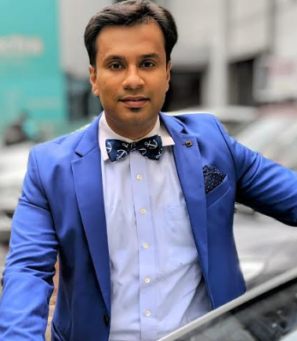
Developed by a multidisciplinary team from India and the United States with lead contributions from Indian researchers at The Esthetic Clinics® (TEC®) and the QR678® Research teams in Mumbai, the paper synthesises decades of hair biology into one unified model of how follicular cycles function, and where regenerative treatment may begin.
The paper centres on five key molecular pathways—Wnt/β-catenin, Sonic Hedgehog (Shh), Bone Morphogenetic Protein (BMP), Notch, and AKT/MAPK—that collectively manage the hair follicle lifecycle. In AGA, the communication between these pathways breaks down, particularly with Wnt suppression and BMP overactivation, causing follicles to fall into dormancy.
The research outlines multiple therapeutic strategies to biologically “reset” the follicle: Wnt activators to reignite growth, BMP inhibitors to lift molecular suppression, gene-editing tools like CRISPR to correct misfiring signals, and stem cell therapies to rebuild a supportive microenvironment. Some of these treatments have already shown success in lab-grown tissue and animal models, and early clinical trials are expected to begin within the next two years.
The implications are significant. The $4 billion global hair loss treatment market is largely dominated by maintenance-based solutions like minoxidil, finasteride, and transplants—none of which address the root biological cause. This research offers a scientific roadmap that, if brought into clinical practice, could shift treatment from external symptom management to internal cellular regeneration.
“For decades, we’ve treated hair loss as a cosmetic issue. This paper consolidates what we now understand about the biological breakdown behind it—and reframes baldness as a malfunction of the body’s regenerative system,” said Dr. Debraj Shome, senior author and Director at TEC®. “Hair follicles don’t disappear; they go dormant due to disrupted cellular signals. By identifying how these signals fail—and how they can be restored—we move closer to resetting the system at a molecular level. It’s a fundamental shift in how hair loss can be understood, and ultimately, reversed.
“What makes this study so significant is that it shifts the global hair loss conversation from superficial treatment to scientific restoration,” said Dr. Michael Gold, renowned dermatologist and founder of Gold Skin Care Center, USA. “By mapping out the molecular misfires behind hair follicle dormancy, we now have a clearer pathway to develop therapies that don’t just slow hair loss—but potentially reverse it by reawakening the body’s own regenerative systems.”
“For years, we’ve been treating hair loss as a cosmetic inconvenience but science tells a different story,” said Dr. Depti Bellani, lead author of the study and Medical Affairs and Research, QR678®. “This research reframes baldness as a regenerative failure and not a lost cause. By mapping the molecular ‘conversation’ between dormant follicles and the body’s repair systems, we’ve uncovered the signals that need to be reawakened. It’s not just about stopping hair loss anymore, it’s about switching the growth engine back on.”
While safety, clinical validation, and personalisation remain the next steps, the study lays the foundation for a regenerative approach that may one day eliminate the need for cosmetic intervention altogether. It also reflects a growing trend in global science, where Indian researchers are helping lead the charge in molecular and regenerative innovation.
DEVI Sansthan and University of Canterbury Study Links Literacy to Women’s Mental Health
Lucknow, 17 July 2025 — A pilot study being conducted by DEVI Sansthan in collaboration with the University of Canterbury, New Zealand, explores whether basic literacy significantly improves mental well-being, emotional resilience, and self-worth among women in low-income urban communities. DEVI Sansthan identified and enrolled women from low-income groups in several slums of central Lucknow, such as Nai Basti, Janta Nagri, Daliganj bridge and others.

The literacy intervention, which is spanning over 15-weeks, consists of 70 women aged 18–50, many of whom had never been to school. These women are now being taught reading, writing, and basic maths through DEVI’s ALfA (Accelerating Learning for All) pedagogy. Unlike traditional education models, ALfA promotes foundational literacy and numeracy (FLN) through peer learning and critical thinking. These informal classes are conducted in local courtyards and shared spaces, allowing women to fit learning into their daily routines.
The study is based in Lucknow, a city of 4.2 million people and the capital of Uttar Pradesh, focusing on women from low-income households and residing in informal urban communities in the old city. These localities are home to migrants from various North Indian states, with high representation of Scheduled Caste and Muslims, among others. A recent survey in Nai Basti, one of Lucknow’s largest slums, found that 60% of households were OBC and 87% were Muslim.
Women acquiring basic literacy skills are reporting noticeable improvements in mood, self-confidence, and their role within family decision-making, as well as reduced feelings of isolation. “This study confirms that literacy is more than an academic outcome—it is a form of healing and empowerment,” said Dr. Sunita Gandhi, Founder of DEVI Sansthan and co-investigator of the study. “Every woman who learns to read begins to stand taller, think clearer, and hope harder. She becomes a Malala in her own right—fearless and vocal.”
The study employs psychological assessment tools, including Self – reported questionnaire, Warwick Edinberg test and the Participation Scale, to track shifts in participants’ mental well-being. Many of the women describe the learning sessions as the only ‘me- time’ they have in their daily lives, creating emotional relief, friendship with co-learners, and shared strength.
Heena, a young high-schooler who leads literacy classes in her slum. “Women juggle housework, stitching, and toddlers,” she says. “We adapt class timings to their lives. Learning should liberate, not burden.”
Gulnaaz, a 22 year old learner from Nai Basti, who wrote her name for the first time, said, “Ab mai apne naam se jaani jaungi” (Now, I’ll be known by my own name). Shamima, a mother of a six-month-old, added, “I will teach my daughter Mannat to read and write. No more labels of being ‘Nirakshar’ (illiterate).”
“This research makes a powerful case for integrating literacy into public mental health strategies,” noted Dr Prajakta Shukla, research coordinator and study co-author. “In low-resource settings, even simple learning circles like these can offer protective benefits against depression, anxiety, and social exclusion.”
Peerless Hospital Saves 25-Year-Old Woman in Critical Condition with Ruptured Ectopic Pregnancy
Guwahati; 16 July, 2025: Peerless Hospital, one of Eastern India’s leading multi-specialty tertiary care hospitals, successfully saved the life of a 25-year-old woman suffering from a life-threatening ruptured ectopic pregnancy, with haemoglobin plummeting to a dangerously low 2.5 gm%. The patient was brought to Peerless Hospital Kolkata in a critical state after being referred from another hospital when her condition became unmanageable. Under the expert care of Dr. Soumitra Kumar, Senior Consultant – Obstetrics and Gynaecology, Peerless Hospital, and a highly skilled emergency and critical care team, a life-saving intervention was executed with speed and precision.
The young woman arrived at Peerless Hospital Emergency Department with severe respiratory distress and signs of hypovolemic shock — a condition caused by extreme blood loss. Her vital signs were alarming — a pulse rate exceeding 150 beats per minute, a respiratory rate above 35 per minute, and a blood pressure of 100/60 maintained only through intravenous fluids. She was pale, restless, and suffering from anasarca (generalized swelling), with signs of metabolic acidosis, an indicator of severe physiological stress.
The clinical team immediately stabilized her with moist oxygen inhalation and began resuscitation protocols. A detailed history revealed that she had self-administered over-the-counter abortifacient medication following a positive home pregnancy test. Three days of vaginal bleeding had ceased, but her weakness progressed significantly, prompting hospitalization.
An emergency ultrasonography at Peerless Hospital confirmed the presence of a ruptured ectopic pregnancy with hemoperitoneum — internal bleeding within the peritoneal cavity. The patient was rushed to the operating theatre for immediate surgery.
Dr. Soumitra Kumar led the complex procedure under general anaesthesia. A Pfannenstiel incision was made to access the abdomen, and approximately one litre of blood was suctioned. A ruptured right cornual ectopic pregnancy was identified and treated with a right salpingectomy (removal of the right fallopian tube), excision of a haemorrhagic corpus luteal cyst, and meticulous peritoneal toileting to stop further bleeding. The surgery was successful with no post-operative bleeding observed.
Given her critical haemoglobin levels, the patient was transferred to the Intensive Therapy Unit (ITU), where she received five units of Packed Red Blood Cells (PRBC), four units of Fresh Frozen Plasma (FFP), and four units of platelets (RDP). She was extubated the following day and steadily recovered in the ward. On discharge, her haemoglobin had risen to 10.4 gm/dl, and she was stable and alert.
Commenting on the case, Dr. Kumar stated, “This was one of the most critical cases we have handled in recent times. The prompt diagnosis, the readiness of our surgical and ICU teams, and the patient’s resilience helped us save a young life that was moments away from collapse.”
The case serves as a strong reminder against the unsupervised use of over-the-counter medication. Dr. Kumar added, “Self-medication, especially with abortifacient drugs, can be fatal. Medication must only be taken under the supervision of a qualified specialist who is aware of the patient’s full medical history and condition. What seems like a shortcut can result in irreversible consequences.”
Peerless Hospital continues to uphold its commitment to clinical excellence, cutting-edge diagnostics, and compassionate care. This successful intervention reiterates its position as a trusted healthcare leader in Eastern India.
Impact of Post-Pregnancy Cosmetic Surgery
Every year on July 16th, India celebrates National Plastic Surgery Day, recognizing the significant contributions of plastic surgery in various fields, including reconstructive, burn, and cosmetic surgery. Among these, cosmetic surgery has a profound impact on post-pregnancy women who often seek to regain self-confidence and body comfort after childbirth.
By – Dr. Anmol Chugh,Associate Director, Plastics & Aesthetics Centre, CK Birla Hospital
Director, Imperio Clinics, Gurgaon
Physical and Emotional Changes After Pregnancy
Pregnancy and childbirth, while deeply rewarding, can lead to lasting changes in a woman’s body. Many mothers face challenges such as:
- Loss of self-confidenc
- Body image concerns
- Physical discomfort
These issues can affect mental well-being and quality of life, making the role of post-pregnancy cosmetic surgery particularly meaningful for some women.
Common Post-Pregnancy Cosmetic Procedures
1. Breast Surgery
- Concerns: Sagging, loss of volume, and asymmetry are common after breastfeeding.
- Procedures: Breast lift (mastopexy) and augmentation help restore shape and volume, improving confidence and comfort.
- Benefits: Enhanced body image, better fit in clothing, and improved self-esteem.
2. Abdominal Surgery (Tummy Tuck)
- Concerns: Stretched abdominal muscles and loose skin are difficult to address with exercise alone.
- Procedure: Abdominoplasty (tummy tuck) tightens muscles and removes excess skin for a firmer midsection.
- Benefits: Flatter abdomen, improved posture, and reduced physical discomfort.
3. Vaginal Rejuvenation
- Concerns: Childbirth can alter vaginal tissues, affecting sensation and appearance.
- Procedures: Vaginal tightening and reshaping address both aesthetic and functional concerns.
- Benefits: Improved sexual satisfaction, restored confidence, and relief from discomfort.
4. Liposuction
- Concerns: Stubborn fat deposits that resist diet and exercise.
- Procedure: Liposuction removes localized fat, enhancing body contour.
- Benefits: More sculpted appearance and increased confidence.
Psychological and Social Impact
- Restored Self-Esteem: Many women report feeling more like themselves and regaining confidence after cosmetic procedures.
- Improved Quality of Life: Enhanced body image can lead to better mental health and social interactions.
- Not About Societal Pressure: The focus is on personal well-being and embracing post-pregnancy changes, not conforming to external beauty standards.
Considerations Before Surgery
- Personal Choice: Cosmetic surgery is deeply personal and should be considered carefully.
- Realistic Expectations: Understanding potential outcomes and limitations is crucial.
- Qualified Surgeons: Consulting experienced, board-certified plastic surgeons ensures safety and optimal results.
Post-pregnancy cosmetic surgery offers women the opportunity to address physical changes, restore confidence, and improve their overall well-being. It is essential to approach these procedures thoughtfully, prioritizing health, safety, and individual goals.
MGM Healthcare Launches ‘Namma Health’ Card and Free Ambulance Service on Its Sixth Anniversary
Chennai, July 14 2025: Celebrating six years of compassionate care and medical excellence, MGM Healthcare has launched ‘Namma Health’ Card, a comprehensive health card packed with six unique benefits for the public in the neighbourhood. The card also includes a free Master Health Check-up exclusively for women.
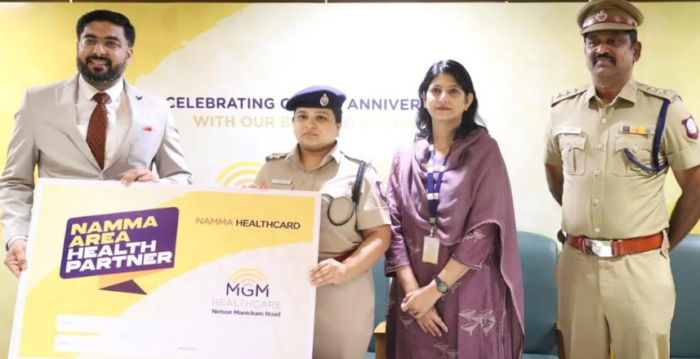
The special benefits for the cardholders are steep discounts on outpatient consultations, diagnostic tests, pharmacy bills, and premium health check packages, along with reduced room rent for non-insurance patients and immediate room upgrades for those with insurance.
As part of the anniversary initiative, the hospital also launched a free ambulance service to improve emergency access and timely care for patients living within a 10-kilometre radius.
In his comments, Dr. Prashanth Rajagopalan, Managing Director, MGM Healthcare, said, “Our sixth anniversary represents more than a timeline. It reflects our sustained commitment to delivering meaningful care. The launch of the Namma Health card and additional emergency and preventive services aligns with our belief in making healthcare more consistent and dependable for those who turn to us.”
Following the flagging off of the ambulance service, the Chief Guest Dr. Bhukya Sneha Priya, Deputy Commissioner of Police, Anna Nagar District remarked, “Initiatives such as this indicate thoughtful expansion of medical services. By integrating emergency and routine care offerings, hospitals like MGM Healthcare are reinforcing the importance of timely and continuous care.”
Agrifields Conducts Free Health Camp and School Sports Day in Rellivalasa
Rellivalasa, Andhra Pradesh, July 12, 2025: Agrifields, an advanced agricultural solutions company, successfully conducted two impactful CSR activities in rural healthcare and education in Rellivalasa village, Pusapatirega Mandal, as part of its ongoing efforts to strengthen community wellbeing.

From July 3rd to 6th, a door-to-door health check-up campaign was carried out, culminating in a full-day medical camp on July 6th. The initiative provided free health screenings for over 200 villagers, with a special focus on blood pressure, sugar levels and general wellness. A team of doctors and healthcare professionals offered consultations, distributed basic medicines and delivered health and nutrition advice that were all free of cost.
“Many villagers, particularly women and the elderly, discovered health issues like high blood pressure or elevated sugar levels for the first time,” said Mr. Amit Gupta, Co-Founder & CEO of Agrifields. “We were glad to start their treatment immediately and provide them with proper guidance. The community’s response was heartening and it motivates us to continue such meaningful efforts in the future.”
As part of its commitment to education, Agrifields also supported a vibrant sports and academic celebration at Zilla Parishad High School, Rellivalasa, which saw participation from over 250 students from Grades 6-10. Students competed in team games like kabaddi and kho-kho, with the entire community turning out to cheer. Prizes were awarded to winners and runners-up, boosting morale and enthusiasm.
To inspire academic excellence, five top-performing students received cash prizes including a girl who had tragically lost both parents as a gesture of encouragement and support.
“These activities are more than events and we consider such initiatives are stepping stones toward building a healthier, more confident and motivated rural India,” added Mr. Gupta.
Agrifields remains committed to driving positive social change through its sustained CSR outreach in underserved regions.
The Face Pain That Makes Life Unbearable: Understanding Trigeminal Neuralgia
 By – Ms. Palak Dengla, Chief Physiotherapist, Aster RV Hospital
By – Ms. Palak Dengla, Chief Physiotherapist, Aster RV Hospital
What Is This Condition?
Imagine someone stabbing your face with a hot knife every time you smile, eat, or feel a breeze. That’s trigeminal neuralgia – when your facial nerve goes haywire, sending lightning-bolt pain through your cheek, jaw, or forehead.
Who Gets Hit?
This nightmare strikes 4-13 people per 100,000 yearly. Women get it more often, usually after age 50. In India’s cities, we’re seeing more cases.
Why “Suicide Disease”?
The pain is so crushing it drives people to desperate thoughts. When you can’t eat, drink, or speak without agony, life becomes unbearable.
Celebrity Reality Check
Bollywood star Salman Khan revealed his battle in 2011, saying he wouldn’t wish this pain on his worst enemy. Even superstars aren’t immune.
What Actually Helps?
Problem Muscles: Your jaw muscles (masseter, temporalis) and deep chewing muscles go into painful spasms, squeezing the nerve.
Myofascial Release Magic: Studies show releasing trigger points in these specific muscles works wonders:
• Lateral pterygoid (deep jaw muscle) – most important
• Masseter (cheek muscle)
• Temporalis (temple muscle)
Postural Correction: Examining and correcting the posture of sitting and sleeping has worked dramatically in my experience
Research proves 10 sessions of targeted muscle release as part of other Physiotherapy regime helps patients in long term.
Daily Survival Tips:
• Ultra-soft toothbrush
• Lukewarm, mushy foods only
• Gentle face massage
• Anti-seizure medications
• TENS therapy
Take away: Remember: this condition is beatable with the right team – doctors, physiotherapists, and your support system working together. Combining muscle release therapy as part of Manual Therapy of Physiotherapy and medication beats this condition. You’re not helpless – there’s real hope with the right treatment team.
